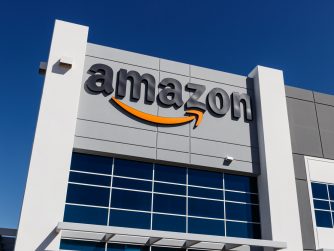Clover Spac, Data Dog & Covered Call Writing
Podcast Transcript
Hey this is Jeffrey with another edition of Stock Smart the February 5th 2021 edition. How you doing? Hope everyone is doing well on a Friday. We’re going to cover some random news topics today of interest things to watch out for in the marketplace. There was a jobs report today unemployment rate is at 6.3% and we’re down 10 million jobs. That’s a concern. Means we’re stalled out in terms of the growth rate of employment, generally unemployment we’ve had a very low rate many in the 3% range. So it’s 6.3, there’s definitely a concern that we’re heading into a potentially a double-dip recession. That’s something everybody who’s an investor needs to be concerned about. Long-term we’re going to get we probably will have some issue.
[00:00:45]
Short-term, we’re going to get the stimulus package, so the cheap money, the low interest rate loans the free money from the government essentially to expand businesses and business loans. Hopefully it will get in the right hands, should curb some of this short-term, but long-term maybe definitely if we look on the horizon, it’s a concern and I would say when you look at it. What you want to track is you want to track the 10-year bonds as the 10-year bonds increase you’ll see investors start to shift their monies into the bond market when they get up there above 1% now, but if they start rising at a 2% range 2-3% on 10-year bonds, you’re going to start to see some risk in equities as people, you know, flee or move into bonds. So, when bonds become investable that’ll be your indicator.
[00:01:33]
Nationwide, this is a really interesting story. There’s a chip shortage. And again, we’ve talked about chips playing a role in everything we use. I have a pepper grinder. There’s a chip in that your Amazon Alexa. If you have that of course, there’s chips in that. Vitamix has chips, you know there’s chips in everything we use and there’s nationwide, we’ve heard two major auto manufacturers, Ford and GM come out, both announced issues with chip shortages and it’s happening in many industries. there was a great report on CNBC talking about how it’s becoming a national security risk, potentially because all of our military devices, jets, planes, military installations, AI that the military uses they all need chips, but most chips that are made are made by Taiwan semiconductor or Samsung in Korea.
[00:02:23]
We’re only making in the US about 10% of all the chips manufactured, kind of a thought process going on where some of the larger tech companies like Amazon, Apple, Google, Facebook, who do have chip projects that they should get together maybe and band together if that could ever happen with these people to come together and start building a gigantic factory here that will take years to put in production. The reason chips are always made somewhere else is they’ve been officially made because it’s cheaper to make them in Taiwan obviously or in Korea than it is here and they have become proficient at it. We’re only making 10%. They’re very good at if they’ve done it for years.
[00:03:04]
There needs to be an emphasis, when you think about it, if you were going into a military world war, let’s say there was some terrible thing that happened, the first strategic place to hit would probably be the chip manufacturing plants because that could decimate and really curb all the building of all this equipment that’s going on. Very interesting thought. So hey let’s shift to another topic – SPACs in the news every single day and as we talked about on a prior podcast when you invest in a SPAC when that SPAC goes public, they go IPO, you’re going to buy it at $10 a share. Generally that’s going to be the par for SPACs. You don’t know what company they’re going to invest in. So there’s one that’s come into question recently. And it’s Chamath Palihapitiya Clover. Clover has come under attack by Hindenburg research.
[00:03:53]
Saying that the due diligence which again was the question I raised on a prior podcast, was not done by Chamath Palihapitiya since there’s so many things have not been disclosed to investors and the investors are at risk investing in Clover. So, it’s very interesting to watch and this again is one of the major concerns when you buy SPAC, you’re not investing essentially in any company at that point you’re investing in a company, there’s another one CCIV, the reports are that CCIV which has raised a lot of money is going to invest into an electric vehicle company, but that is still unknown that’s not being disclosed that is being rumored.
[00:04:31]
So when you invest in the SPAC, the SPAC is raising money, that’s all they’re doing, with the intent to purchase a company. Now Cramer and this is interesting because now we’re getting this big rise and increase in SPACs. And what’s happening is you’re getting a savvy investor or an investor group and then they’re partnering with a celebrity. And the celebrity of course can bring notoriety and attention to the SPAC thereby making it easier to raise money. So the celebrity comes in, Shaquille O’Neal, Alex Rodriguez, other famous and well-known people, they come in, those are both two people who are getting involved in SPACs. They come in and people are like, I want to invest in something Shaquille O’Neal is in. You know, he’s a great basketball player. He probably knows a lot about XYZ.
[00:05:18]
Well, they’re doing it to raise money. Cramer from CNBC had a great comment, he said I’m going to use it word for word, the newer SPACs increasingly feel like an inside joke for the super rich and a way for celebrities to monetize their reputation. Believe me, you don’t want to invest in someone else’s inside joke. So, please please please the way to prevent getting hurt is do your homework. So the point is it’s what we talked about or what I talked about on the show is that you don’t know what they’re going to get invested in. So let’s take a look at a stock that I’m keeping an eye on right now.
STOCK WATCH
And it’s Datadog, ticker symbol DDOG. Company is heading in earnings February 11th, technicals look very strong, revenue growth has been in the 70-80% range.
[00:06:03]
They’re looking where the stock is now, looking to take out a 52-week high, been some unusual call option activity. I’ll tell you why that’s interesting is because generally when you see unusual call activity, what happens is if the market-maker is selling a lot of calls, what he’s going to want to do is hedge his position. So you’ll see like the Najarian brothers on CNBC and they’ll say, unusual option activity. Well what that generally means is yes, someone may know something about a company. So when you get a long option, a long call option, someone might know something’s going to come up and they make it invested.
[00:06:39]
You know, again, you call this Insider information if you want, but what happens is when the market maker gets too exposed, so the person who is going to create or write the calls, the market-maker when they get to exposed in a position what they’ll do, is they’ll figure out what the dynamic hedge would be and that generally would be that they would buy the stock. So, a lot of times we see is when there is a heavy amount of call activity, the stock will increase because the market maker has to buy the stock to hedge his position long. That’s just the strategy I wanted you to be aware of but let’s get back to Datadog. What does the company do, it’s essentially a company that sells a SaaS platform, software-as-a-service and essentially their platform,
[00:07:20]
What Datadog does is they monitor companies that are in the cloud, they essentially if you have a stack of servers, Datadog has a piece of information like a graphical user interface system that essentially reports on how things are going, if the server is having trouble, if it’s not performing well if the drives are full and when the last backup was, all these different things that you need when you’re running servers and when you think about it, you’re like, oh, it’s one server, No, it’s when people have thousands of servers, like companies like Amazon or Google, they have tens of thousands of servers they’re running. So they need to be able to monitor those in an efficient way. The way to really evaluate a software-as-a-service company, when you talk about,
[00:08:04]
Okay, so there’s a couple different companies in in the Tech space. A company like Facebook, that gets evaluated sort of on its daily active users, the DAU. Companies that are in the software as a service, like that Tech space, they are one of the best for evaluating, the NDR, or the net dollar retention, and what is net dollar retention? Essentially net dollar retention shows how well a company’s doing, it shows if they’re pleasing their client if their clients are staying and if they’re adding more products So net dollar retention, it’s a number that’s achieved by looking at a period of time, examining a client or sets of clients, and seeing how much value the client has over that period of time. So, let’s say you get client A and let’s think of it as $1.
[00:08:52]
Now client A spends $1 with you but within the next year not only do they stay with you but now they spend another $0.50 or another $1.50. Well that’s what NDR is. It essentially shows when a client stays with you and then adds and grows with you, and so NDR for a software-as-a-service company is an important thing, it shows that the client likes you, they’re going to stay and that they’re growing with you and they’re going to add more services. So NDR for SaaS companies, key key indicator.
[00:09:19]
Not every company releases this data so you’ll have to see if you can find it, it’s hard to get sometimes but there’s about I think there’s 30 or 40 where you can get the data of major companies that are software-as-a-service plays, some of the highest ones and you can see this related, directly related to the stock prices for SaaS software models Snowflake, their net dollar retention is about 158%, Twilio 155, Elastic 142, Pagerduty 139%. The net dollar retention for DataDog is in the 135-145 range. So it is right in line with those other companies, and I’ll tell you a big thing about software-as-a-service, having been in this industry.
[00:10:06]
It’s entrenchment these companies do well because there when you sign on and you go with one of these companies, it’s very difficult to move, people who are in companies like Salesforce when they get their company set up and trained on that, they’re not leaving Salesforce. I could tell you it’s going to take a massive shift and a corporate change to really get out of there. Entrenchment is a big word in this industry. So we like DataDog, maybe wanna buy a little bit before earnings, take a look at it’ see if the charts technicals, look for a breakout. I have another question and thanks again. Send questions to Jeffrey@JeffreyKamys.com. Again, I’m a financial advisor. I have two companies.
[00:10:48]
I have inherent wealth fund and I have baseline Investments where I represent my clients and advise them on financial positions and stocks and their futures.
THE AVERAGE INVESTOR
So I have a question from Jim. Jim asks me to explain the dynamic of writing covered calls. So covered calls, are a very very conservative way to make an extra income. Essentially a covered call is when you write or sell a call against a stock that you hold a hundred shares. So a call is worth a hundred shares. So if I have a hundred shares of Oracle, I can write calls against it and the only fear that I have is it that stock gets called away or if I have to sell it to cover the call position. So that’s why it’s covered, because you own it. So if it goes up, you’ll get, the stock will go up and you can sell it and cover your call position.
[00:11:41]
But the value comes in when you write the call and a lot of calls, many calls and I didn’t look this up. I wish I had, it’s a huge number of percentage of calls that expire without being in the money. And when you say in the money, it’s a call if your call is a $120 call and the stock is 121 then you’re in the money. If the stock is 119, you’re not in the money you’re out of the money. So most calls fall out of the money. And so this is a very good strategy to write covered calls to get premium. So when you write the call, the buyer of the call pays you a premium. Now, if the call expires out-of-the-money you get to keep the premium and that’s the game.
[00:12:23]
And so essentially you can write those as many as you want against the covered position that you have so if you have 500 shares of Oracle, you can write five covered calls. Now you have to avoid certain stocks to do it. The pick here is to pick stocks that don’t get attention. So you don’t want to pick stocks that are on CNBC everyday that make news all the time. You want to pick stocks that are boring, stocks that usually work with this, Oracle kind of stays along a certain trendline doesn’t really, for 10 years.
[00:12:50]
I don’t think the stock moved it really only moved in the last year because it had the backing of Trump with that Tik Tok deal which I don’t know, to me looks like it’s dead because I haven’t heard anything about that but Oracle is one that stays in a very flat channel. It doesn’t move, it moves hardly at all. So Oracle is one you can write covered calls against, the premium is not going to be huge.
[00:13:09]
but it’s free money. IBM another company, stays in the channel for the most part, good companies to write covered calls, stay away from companies that make major news or have notable risk coming up or events, high-profile earnings announcements those kind of things that is when you can get into trouble with covered calls. So anyway I hope that answered your question. Everybody have a great weekend, thanks again this is Jeffrey Kamys with Stock Smart. We will see you next time.
More from this show
Real Estate Expert Bradford Shepherd, Interest Rates, Real Estate as an Investment for Retirement
Supply Chain Expert Enrique Alvarez, Container Prices Drop, Fuel Costs in Trucking & Shipping
Guest Casey Stubbs of Trading Strategy Guides, Record Buybacks, Inflation & Bonds and Upcoming Stocks Splits, Amazon & Google









Recent Comments